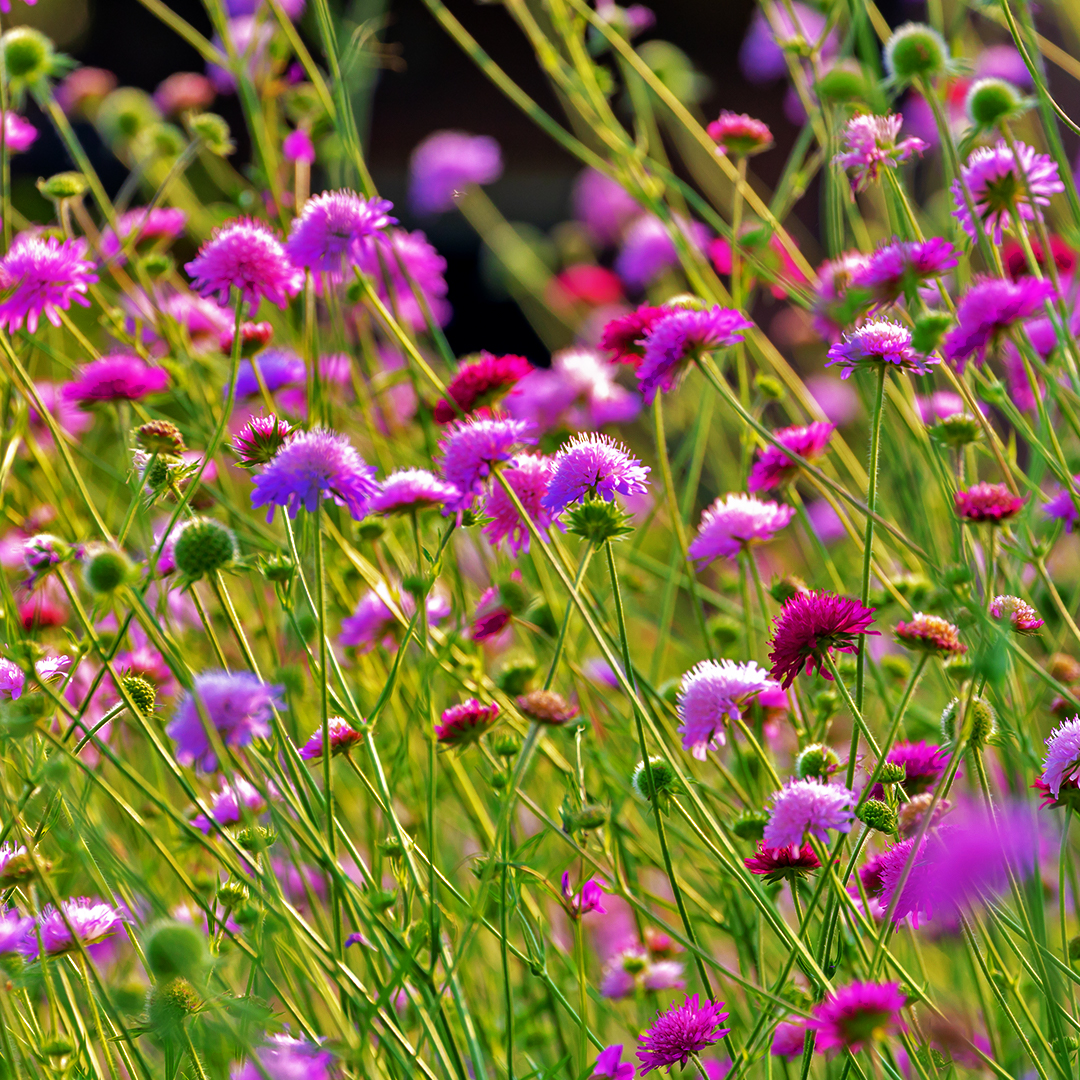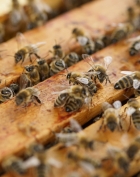Field Scabious
Knautia arvensis
Best Time to See: July, August, September
Habitat: Grassland
Colour: Purple
The dainty, lilac blooms that bob on the end of long stalks, can be a common sight on road verges at the end of summer.
Field Scabious is a familiar parent of one of our favourite cottage garden plants. It has a very long flowering period and so is a valuable nectar source for bees and butterflies. Each plant can produce up to 50 flowers and blooms are the largest of our native scabious species. Finches and linnets love the seeds of this plant.
Habitat and distribution
It is found throughout the UK growing on chalky and neutral grassland that is well-drained. It can also be found in hedgerows and along roadsides and railways.
Did you know?
- Field Scabious has a rough and hairy stem similar in texture to scabby skin. According to the 'Doctrine of Signatures' - where herbalists treated illnesses with plants that resembled the body part associated with illness - this association probably led to it being used as a herb to treat scabies, mange and itches.
- The juice of 'scabiosa herba' (from whence its common name derives) was given to alleviate plague sores.
- In Belgium a girl would pick Scabious "buttons", give each a lover's name, and then choose her husband by the one that flowered best.
- Common names include blackamoor's beauty, pins-and-needles, snake flower, and curl-doddy (i.e. curly head).
- The 'pom-pom' like nature of its flower has also given rise to alternative names such as Lady's pincushion, bachelor's buttons and blue bonnets.
Conservation status
It is commonly found in its preferred habitats.

